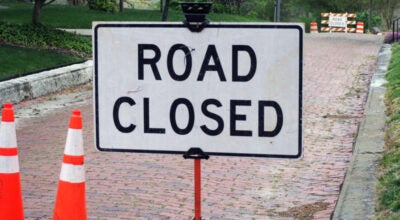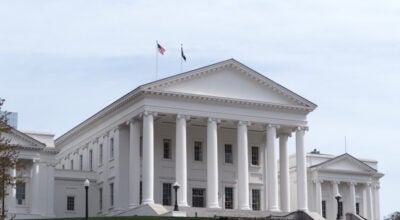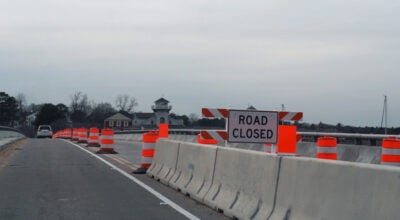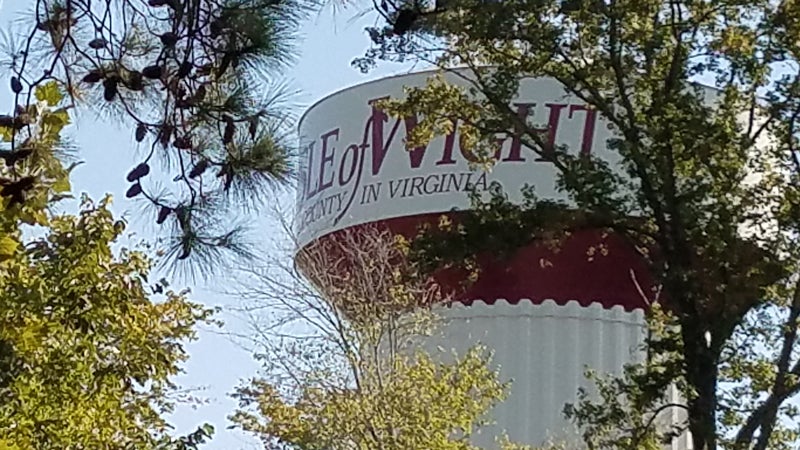NAACP: Confederate flag offends at County Fair
Published 5:51 pm Tuesday, October 5, 2021
Isle of Wight County’s NAACP chapter is taking issue with a large Confederate flag that hung from a tent near admissions gate No. 2 at the 2021 County Fair.
“We have thousands of people from all over to come to visit the county via the fair and we display a sign of hatred and divisiveness,” said NAACP Chapter President Valerie Butler. “This is unacceptable and people need to make their voices heard at the polls.”
According to Jenilee Hallman, Isle of Wight County’s fair and events coordinator, the total number of attendees for the fair this year was 32,676. Butler said she’s received several complaints following the Sept. 16-19 fair’s conclusion regarding the flag.
Among them is Lakeshia Upfold, who posted publicly on Facebook after the fair that she’d been taken aback when entering by the sight of the flag and an accompanying sign identifying the booth as belonging to the Sons of Confederate Veterans.
The Tennessee-based nonprofit’s website describes the group as a “non-political organization” dedicated to ensuring a “true history of the 1861-1865 period is preserved,” including the controversial claim that “the preservation of liberty” — not slavery — was “the motivating factor” in the American South’s decision to fight in the Civil War.
Suffolk’s Tom Smith Camp No. 1702 was the chapter exhibiting at the Isle of Wight County Fair.
“I took pictures when I was leaving,” Upfold wrote. “I’m truly disgusted. My family and myself will never go to this again. I can’t believe they would allow it in the first place … that flag represents nothing but hate.”
Christine DiPaola, a mother from Ivor in Southampton County, also noticed the flag and took offense.
“I didn’t grow up down here,” DiPaola, who is originally from Pennsylvania, said. “All this is new to me. It doesn’t sit well with me.”
According to a map of the fairgrounds, the tent with the Confederate flag served as the county’s designated location for “non-profit/political” booths.
The county had previously banned political booths after the 2013 fair, citing complaints from vendors, but then-Del. Rick Morris, R-Suffolk, objected the following year when he was denied permission to set up a dunking booth at the 2014 fair to raise money for Court Appointed Special Advocates (CASA) — a nonprofit organization that advocates for abused and neglected children. Morris ended up asking Virginia Attorney General Mark Herring for an official opinion on the matter.
Morris had argued a ban based on the content of the booths violated the U.S. Constitution’s First Amendment free speech protections, according to past reporting by The Smithfield Times, and had also taken issue with the 2013 fair having charged a higher fee for political booths than for all other nonprofit and governmental groups.
Herring ultimately agreed with Morris, concluding “an absolute prohibition on political booths is not constitutionally permissible,” nor is “charging a higher fee for such booths than others” unless such fees are justified by a “compelling governmental interest.” Attempting to avoid discomfort among fairgoers doesn’t rise to the “compelling governmental interest” standard, Herring wrote.
Asked when the county officially reinstated political booths at the fair, Assistant County Administrator Don Robertson said the Fair Committee’s actions in 2013 and 2014 never amounted to a “ban.”
“They have always had access,” Robertson said.
But The Smithfield Times reported at the time that a July 29, 2014, letter signed by then-Board of Supervisors Chairman Byron “Buzz” Bailey did, in fact, term the Fair Committee’s action as a “prohibition of political booths.”
According to Robertson, the “non-profit/political” tent has been located in the same place near the Gate No. 2 entrance for at least eight years. The Sons of Confederate Veterans have been an exhibitor at the Fair for the same number of years.
There was no particular order for how booths were assigned within each tent, and therefore no reason the Sons’ booth was located in the corner of the tent visible to those entering the fairgrounds, Robertson added.
In accordance with Herring’s 2014 opinion, all nonprofit/political organizations were charged the same price per square foot. Outside 20-by-20-foot commercial spaces were $325 and 10-by-10-foot booths inside the tents were $50.
“We are not aware of any complaints specific to Sons of Confederate Veterans prior to this year,” Robertson said. “We encourage anyone who has a complaint about the Fair to contact us and let us know their concerns. We will provide that information to the appropriate individuals (the Fair Committee and/or staff) so improvements can be made where possible.”
The particular version of the Confederate flag on display at the county fair, which features 13 white stars atop a blue diagonal cross and rectangular red background, was never adopted by the Confederate Congress as the Confederacy’s national flag during the Civil War.
A square version of the design served as the battle flag of the Army of Northern Virginia. In 1863, the Confederate Congress adopted a flag known as the “Stainless Banner,” which featured the battle flag in the upper left-hand corner of an otherwise white flag that — in the words of Savannah Morning News Editor William T. Thompson, who has been credited with its design — was intended to symbolize “the heaven-ordained supremacy of the white man over the inferior colored races.” An alternate version, known as the “Blood-stained Banner,” debuted in 1865, featuring a vertical red stripe down the flag’s right-hand side.
The battle flag design “largely disappeared after the Civil War,” The Washington Post reported in 2017, with the rectangular version reappearing in the 1950s and ’60s when “white Southerners reintroduced these symbols as a means of resisting the Civil Rights movement.”
The Smithfield Times reached out to the Suffolk SCV chapter on Sept. 27 but received no response by press time. Chuck McMichael, a past commander-in-chief and spokesman for the SCV’s national headquarters, however, says the rectangular version of the battle flag was used as the Confederacy’s naval ensign and as the Army of Tennessee’s battle flag.
“It also happened to be the one that the veterans used most often at their reunions since so many of them had come from the Army of Tennessee,” McMichael said, calling its use at the county fair “appropriate.”
It’s “not a surprise,” the NAACP would file a complaint, he said, accusing the group of wanting “the eradication of any semblance of the Confederacy … even monuments.”
Isle of Wight County relocated its 116-year-old Confederate monument earlier this year from the grounds of its governmental complex to private property owned by Carrsville District resident Volpe Boykin.





